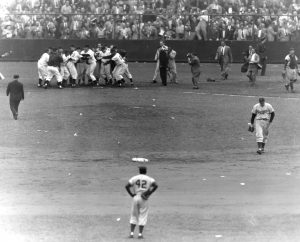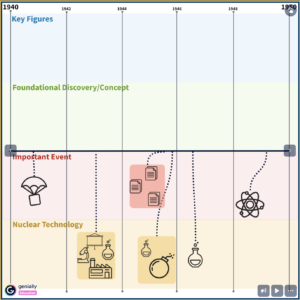What if you found yourself dancing for a purpose much bigger than yourself? Could a dance have the power and the ability to bring back life or rebuild the earth? When people dance for a purpose, others see and listen; but maybe not in the right way. Could the events that occurred at the Battle of Wounded Knee be the cause for such a pivotal moment in history? In this particular case, religion is at the heart of the Sioux Ghost Dance. The power of such a religion is almost unseen in today’s society. Today, when people picture Indians dancing, they picture a massive fire, guns being fired, and many more ritualistic signatures. An extraordinary element of this dance is that it was a religious ceremony, just like taking communion in Church. During this period in history, life was drastically changing for the Sioux Indians. Some of their problems included loss of their land to the whites, scarcity of food, and their freedom being taken away from them. In search of regeneration of the earth and a connection to nature, the Sioux sought to restore things back to earlier times.

The dances that were most important to the Sioux were the Sun Dance and Ghost Dance. The most religious one of the two was the Sun Dance. This was a self-sacrifice ritual with dancing, drums, praying, and self-made cuts to the body. The cuts were made to bring the people closer in prayer and sacrifice for their loved ones. The Ghost Dance was a ritual that led the Battle of Wounded Knee Creek. The purpose of the famous dance was for the earth to restore the earth’s caretakers to their original life of beauty. The Cheyenne, Arapahos, and Kiowas tribes sent emissaries to a man named Wovoka, who said he was the messiah and claimed to be a visionary. This man proclaimed to people that he was shown songs and dances when he had died for some time. He gave the people instructions for the dance.1 Wovoka spoke of the weather and of the future ahead. He also told them to be nonviolent and behave admirably. He changed the tactics of the Indians from war to peace, and he told them that following the orders of the whites would further develop them. The Sioux tribes were influenced by the man and stopped all their warlike ways of life in order to prepare themselves for the happiness to come. The dance was made for peace with the white people; but the Sioux made changes to make it a cleansing ritual for the whites to leave the land. The dance made its mark and made a wave against the white man. 2
The U.S. government broke the Treaty of Fort Laramie and broke up the Great Sioux Reservation of South Dakota into five smaller reservations. The treaty established a relationship between the Sioux, various other tribes inhabiting the Great Plains, and the United States government. The tribes agreed to cease any further violent activity among each other, and the U.S. government would have the ability to develop tracks and roads on their land. They also wanted to break the tribal relationships that were forming during this time. 3 Cavalry had taken Spotted Elk, also known as Big Foot, the chief of the Lakota, to Wounded Knee. The band of Indians had been doing what was asked of them by Wovoka to get the earth back to its full self. On the morning of December 29th, the cavalry tried to collect weapons from the Indians so that no violence would break out. One deaf Lakota warrior refused to give up his rifle. In the scuffle, the firearm had gone off and gun shots filled the morning sky with smoke. Many women and children were killed, making up the majority of the casualties in the massacre.4 Most of the people that participated in the Ghost Dance were not acting out in war-like ways, but despite the purpose of this dance, the government was still very anxious towards the tribes.
The Sioux were such a powerful tribe. They took what was needed and used all that the Great Spirit gave them. These fascinating people were certainly not the “savages” they have been depicted as, but they were people who used all parts of the earth with purpose and meaning. The lives lost at Wounded Knee were a tragedy. This truth of the Ghost Dance and the power of a singular tribe had the influence to show others throughout history that unity can be positive during hard times. The coming together of a people for a spiritual way of life can be meaningful for all that are surrounded by such a force.
- James Mooney, “Ghost Dance – The Messiah Letter from Wovoka,” accessed August 31, 2016, http://www.ghostdance.us/history/history-messiahletter.html. ↵
- Matthew A. Taylor, “‘Contagious Emotions’ and the Ghost Dance Religion: Mooney’s Science, Black Elk’s Fever,” ELH 81, no. 3 (2014): 1055–82. ↵
- Wikipedia contributors, “Ghost Dance,” Wikipedia, The Free Encyclopedia, https://en.wikipedia.org/w/index.php?title=Ghost_Dance&oldid=737020849;33 (accessed September 8, 2016). ↵
- Gregory Michno, “The Indian Trail of Broken Treaties,” Wild West 19, no. 2 (August 2006): 38. ↵



44 comments
Hector Garcia
It is sad to read about what lead to the massacre of the Sioux at Wounded Knee. It was indeed a tragedy because of the number of casualties in this massacre were mostly children and women. It is shocking to see that the U.S. government responded this way and disappointing to see that the U.S. government tried to depict them as savages. Overall, the article seems to be well-written and well-researched.
Elias Garza
This is a great article and a great story! I am glad I know that dancing can be more than just art to some. I use to dance and I enjoyed it very much but never did I take dancing as serious as them. It is crazy to see different cultures use the same traditions in different ways. All in all, dancing is always fun and aspiring.
Timothy ODekirk
I was extremely interested in this topic of The Battle at Wounded Knee. I find it a little disturbing of the fact that the U.S. Army wanted to split the Native American tribes into smaller reservations. In addition, I found the dance with the Great Spirit extremely interesting as well. Furthermore, it is sad to think how Native Americans were treated during this time. This article was extremely intriguing to me and was well done.
Mario Sosa
A most fascinating topic! It is very unfortunate how a misunderstanding action led to such violence. Even more unfortunate is how media has portrayed Native Americans as violent people with crazy ceremonies. Had the U.S. cavalry got to know the Sioux tribe more and understand their beliefs and traditions, then there would not have been any violence. Excellent, very nice work on the article!
Megan Barnett
I liked your take on this story by explaining that the Sioux Indians were not at fault for the image people saw them as. I knew what happened at the Battle of Wounded Knee, but I did not know much about the reason behind their dances. What the U.S. government did was wrong and unfair to the Sioux Indians as they were already cooperating with them and on top of that they were working on being a nonviolent tribe.
Crystalrose Quintero
I like that the first paragraph has something to relate to. It poses the idea of what people typically imagine when thinking of Indian ritual dances. I also appreciated that the article provided an analogy to compare what ritualistic dances were in comparison to something the reader can relate to so to have a better understanding; in this case they used taking communion in church. The first sentence of the last paragraph really brought the entire article together. It wanted to depict that the Sioux were not savages and had other aspects to them beyond what people have been told.
Jennifer Pogue
Great article! I recently read a piece of literature about the Sioux. It is interesting to read about them from this perspective. I had never thought of their dances as a religious practice, like communion. It makes the way Hollywood portrays Native American tribal dances feel wrong. I would not like my religious practices to be shown that way. I’ve heard many stories about how Native American dances were stopped by the whites and they were killed. I can not imagine being in church and having a group of people storm in to kill me. It really makes me think about how we treat people of different religions now. Overall great article.
Faisal Alqarni
Hello Oscar, it is interesting how a dance could hold so much significance for a community in their time of need, I read about the ghost dance at wounded knee by Gabriel before and now to know about the various rituals practiced by the Sioux such as cutting and the long dances with drums just brings more alive for me. This Wovoka must have been a very mythical person I like how he gave hope to his people in a time of despair and even though his intentions were poorly rewarded by the white man I like his peace approach. Your paper is very well detailed and I like the use of pictures too.
Johnanthony Hernandez
Very informative article, I had read about the massacre in a book a few years back but it didn’t going into any detail about the treaty or the Ghost Dance that the Sioux performed. I don’t know much about the Sioux’s religious practices and this article makes me want to read up more on their religious ceremonies and the events that led up to the massacre.
Nelson Smithwick
I liked the fact that you focused on the some of the peaceful aspects of the Ghost Dance, most literature on this topic focuses on the idea that the Ghost Dance was an attack on the white man, perhaps as a way to justify the later attack that took place at the Battle of Wounded Knee. It was refreshing to see this part of the Sioux’s culture in a different light.